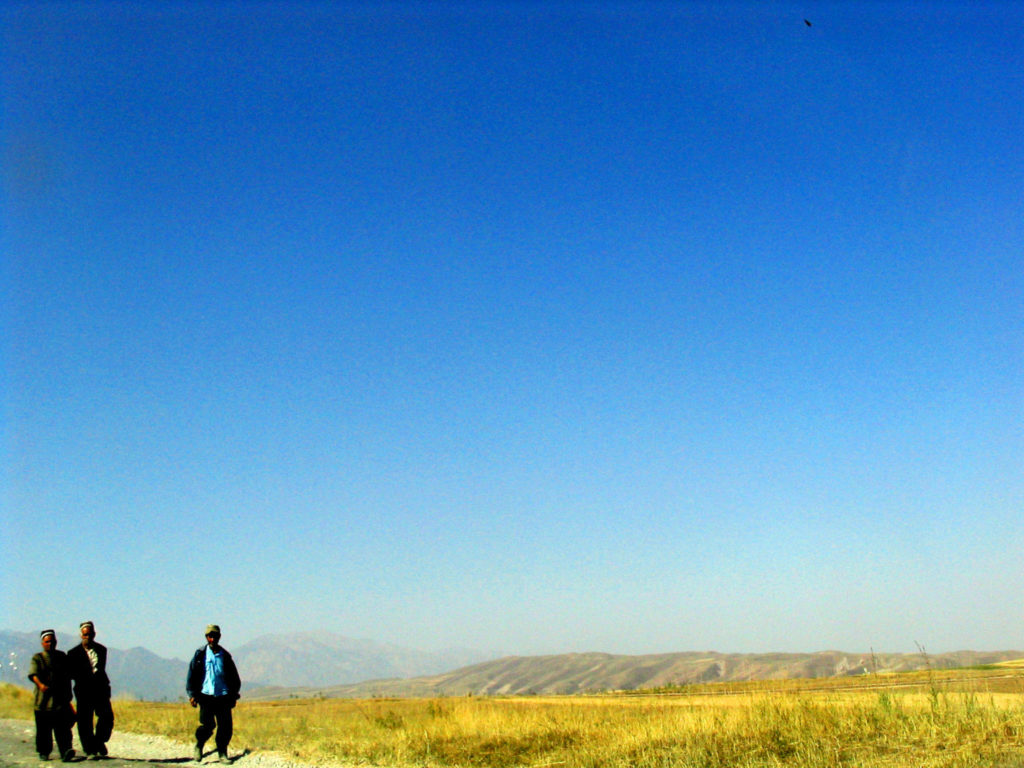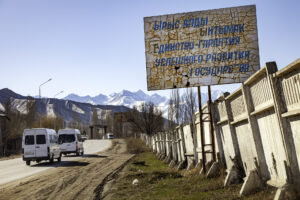Over the course of a webinar, several French specialists went over the recent clashes between Tajikistan and Kyrgyzstan. Various speculations about how the relations between the two states may develop were discussed. Novastan followed the discussions. This article was originally published on Novastan’s French website on 20 May 2021. On 19 May 2021, a webinar organized by the French Institute for Central Asian Studies (IFEAC) attempted to present a clearer overview of the border region tensions between Kyrgyzstan and Tajikistan. From 28 April to 3 May 2021, clashes at the border between the two states have led to the deaths of more than 50 people and have led to accusations on both sides. Since 3 May, a ceasefire agreement and a project to mark out the border have, in the meantime, replaced shootings across the border. Held in Bishkek, the capital of Kyrgyzstan, the conference brought together French researchers, geographers and political scientists. While some predict a gradual return to a cold-war style conflict, others point to potential improvements in Tajik-Kyrgyz interstate relations.
Disputed Facts
“There is only very little clarity surrounding how the events transpired, since there are two opposing lines of discourse. Kyrgyz media reports that police in Kyrgyzstan’s Batken Region have accused residents of Tajikistan of firing at Kyrgyz soldiers. The State Committee for National Security has accused Tajikistan of using mortars to bomb a water supply site, and of carrying out acts of provocation”, declared one of the participants of the webinar, who has requested that they be kept anonymous by Novastan.
“But with Tajikstan, we have the opposite story,” they continued. “It is the Kyrgyz border control who have been accused of beginning the hostilities. For example, the border troops’ press centre declared on 28 April at 11 pm that Kyrgyzstan had incited its citizens to commit violence and stir up tensions. Kyrgyz special forces were reportedly disguised as citizens, acting against the Tajik population.”Read more on Novastan: What are the underlying reasons for the deadly Kyrgyz-Tajik border clashes? As pointed out by American media outlet Eurasianet, Kyrgyzstan had proposed to exchange Vorukh, a Tajik enclave in Kyrgyz territory for equivalent land several weeks before what happened. An official visit between the vice prime ministers of the two countries had been organized for the 21 February 2021, but the Tajik side refused the proposition in the end. A Geographical Expansion of the Conflict“One characteristic of the conflict has been its geographical expansion. (…) The conflict has extended across a large part of the border between the two countries; in the Isfara District to the east, but also more towards the west, at the meeting point of the Syr Darya plain and the foot of the Turkestan mountains”, explained Julien Thorez, a geographer and researcher at the French National Centre for Scientific Research (CNRS). The fact that the conflict is spreading has been confirmed by another speaker. “There have been images of war all along the border. (…) This new scale of violence marks a precedent in the conflict”, they described, not wishing to be named by Novastan. One of the explanatory factors is the progressive militarization and utilization of the border. As the border is disputed, tensions have been heightened. More broadly, Isabella Damiani, lecturer in geography at the University of Versailles Saint-Quentin-en-Yvelines and Paris-Sanclay University, affirms that the expansion of the conflict has sometimes not been fully addressed by western media. “One of the big issues of the recent conflict in the past weeks has been the question of location; we have found ourselves in a very high-profile conflict around the borders of a region not well known at an international level”, she noted.
The Ethnicization of the Conflict
Ethnic tensions were already present during the USSR at the place where the Uzbek, Kyrgyz and Tajik borders meet. However, these tensions have worsened since the collapse of the USSR, and boil to the surface with each conflict, stated Olivier Ferrando, lecturer in political science at the Catholic University of Lyon. “The ethnicization of the conflict is a reality. The question of ethnicity is linked to the overlap of homogenous populations on both sides of the border. The border between Isfara and Batken is homogenous, which is not the case elsewhere in the territory,” stated Olivier Ferrando. Julien Thorez added: “It was during the Soviet period that social and political relations became ethnicized, a phenomenon that has become much more pronounced since 1991 and the collapse of the USSR. Ethnic tensions encompass the Uzbek populations as well as the Tajik and Kyrgyz populations. The functionalization of the borders has not reduced tensions at all. On the contrary, it has increased the tendency of the populations in the Ishmael valley to engage in conflict.” However, the factor of ethnicity has been nuanced by Olivier Ferrando, who considers that populist and nationalist discourse has only been effective in these divided villages. In multi-ethnic villages populated by Uzbeks, Kyrgyz and Tajiks, nationalist discourse has not taken hold despite the existence of tensions over resources.
Positive Indications of Reconciliation
In spite of the conflict’s qualification as a Cold War style conflict, a qualification referenced several times throughout the webinar, there are indications that the situation may be improving. The two countries have decided to resume border negotiations, with the aim of completing the demarcation of their common borders. “On 18 May, the governors of two border regions met and agreed upon weekly meetings to discuss border issues. They also agreed that both armies should patrol the entire border,” explained one of the speakers. In terms of the civil populations, the road, water and electric networks are linked at the border, leaving room for cooperation. According to Julien Thorez, the authorities have planned to build a new road linking Vorukh to Tajik territory. “Some villages are supplied via the network of the neighbouring country. In terms of water, there is a whole series of cross-border canals on which the villages depend. It’s the same for the transport networks,” he explains.
Written by Leo Friedrich
Translated from French by Molly Arnold
Edited by Maya Ivanova
For more news and analysis from Central Asia, follow us on Twitter, Facebook, Telegram, Linkedin or Instagram.
 Can Relations Between Tajikistan and Kyrgyzstan Improve?
Can Relations Between Tajikistan and Kyrgyzstan Improve? 



